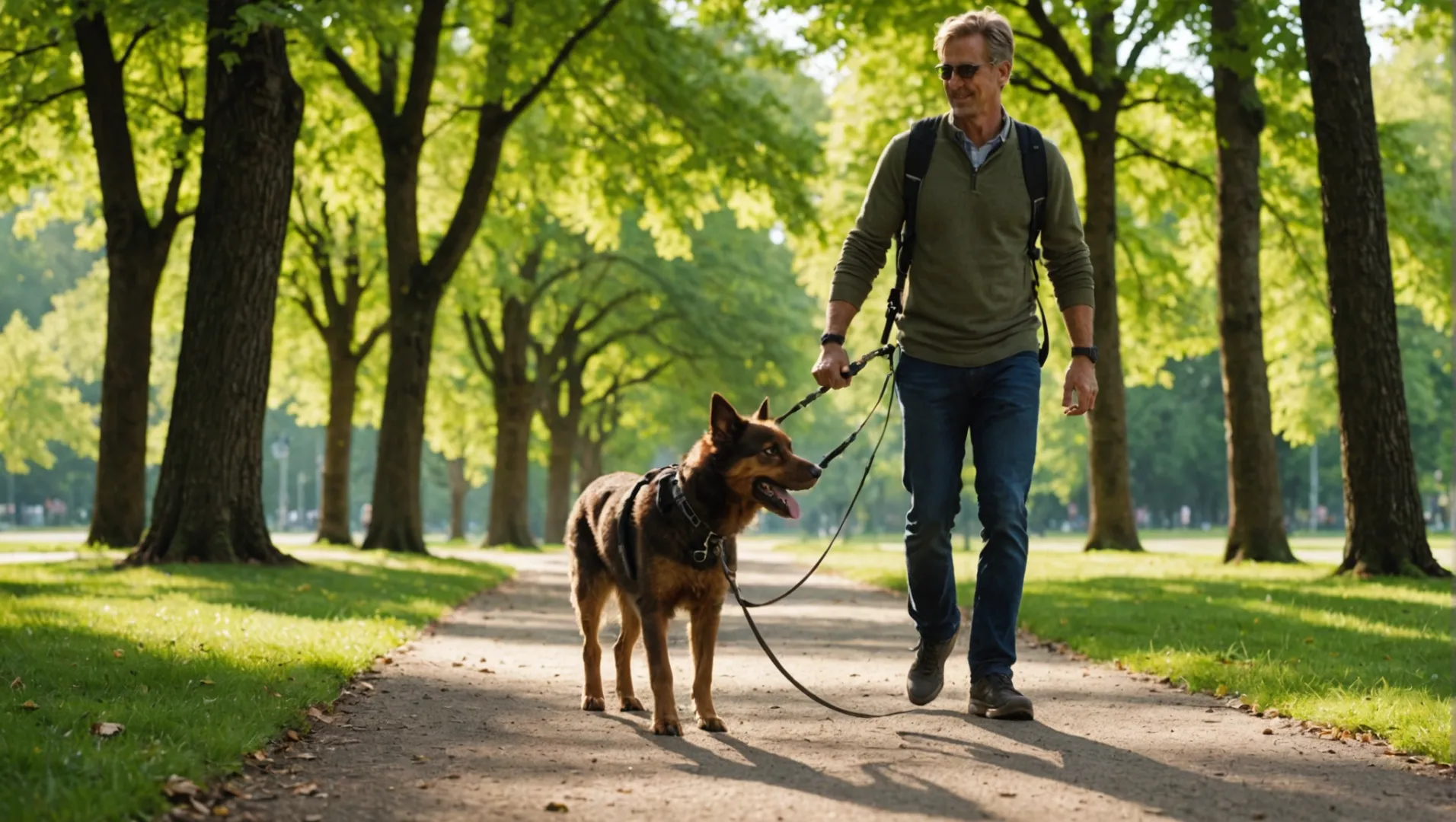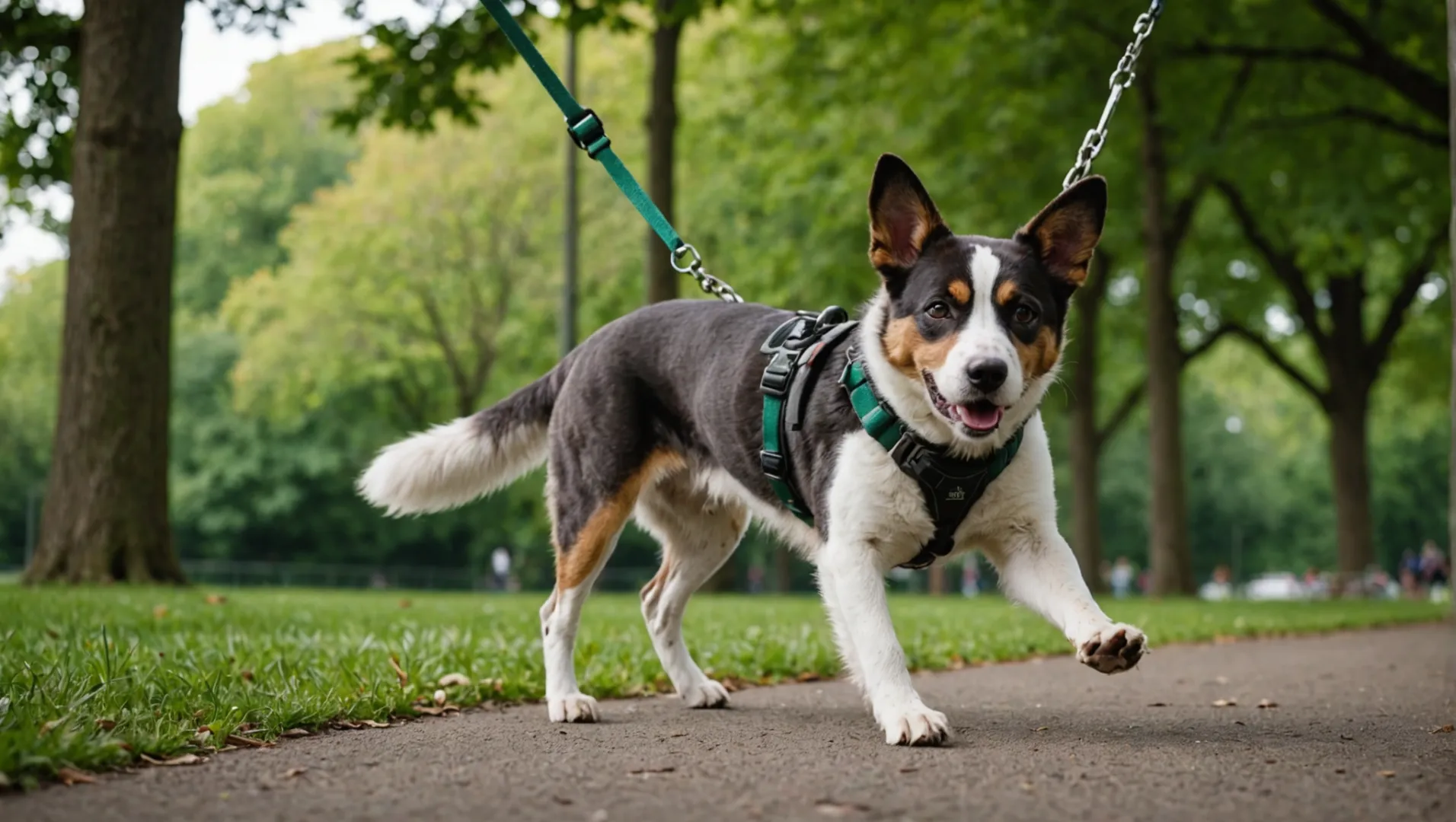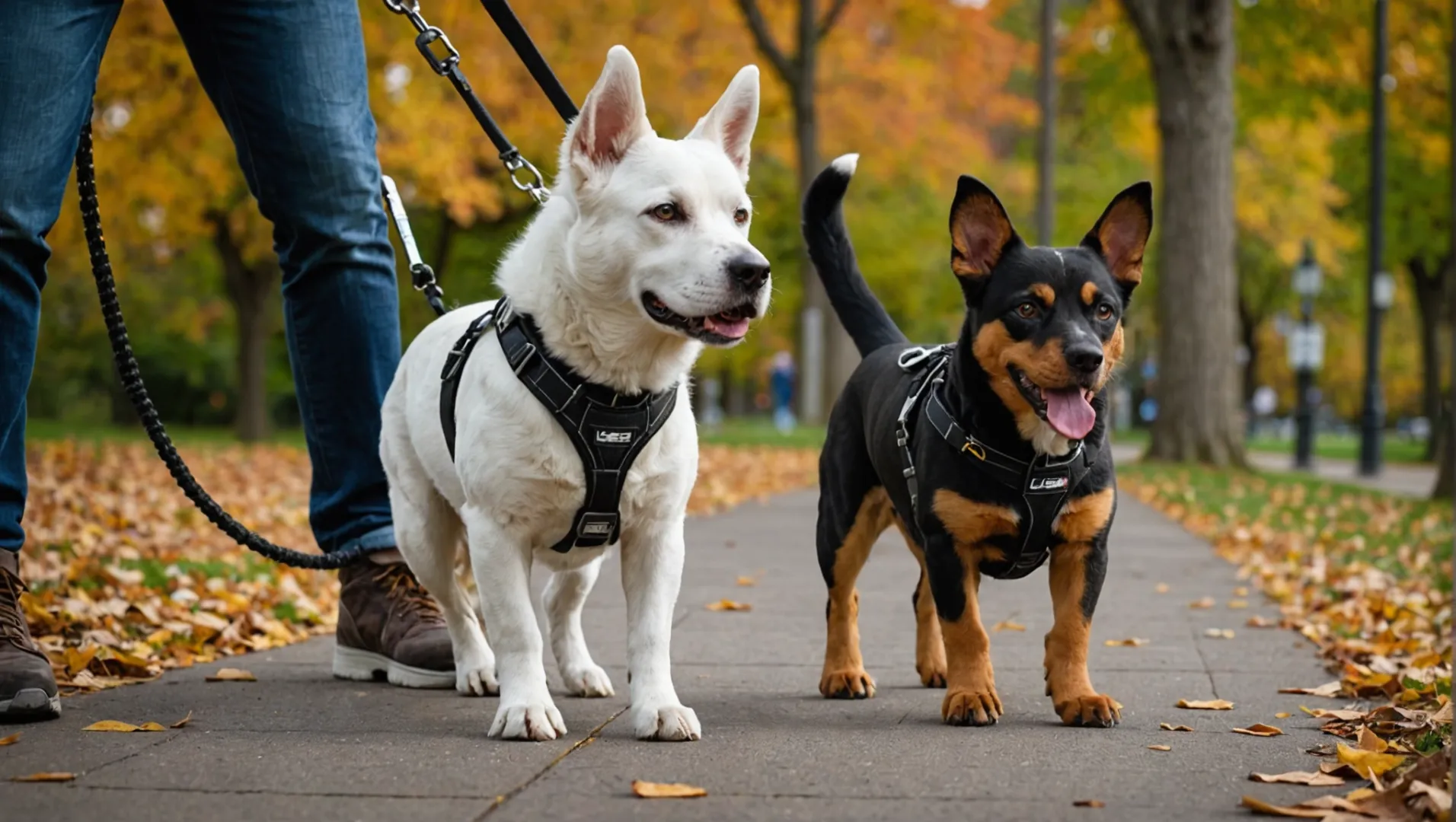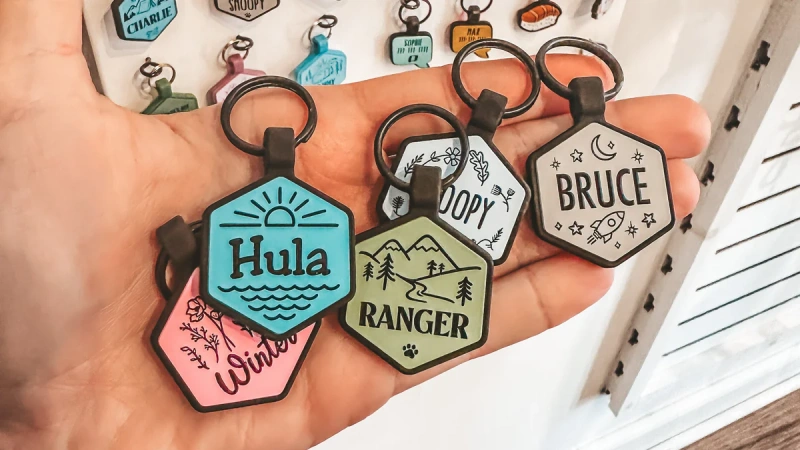
Have you ever felt like your arm might come out of its socket when your dog lunges ahead? I know I have! That’s where bungee leashes can make a world of difference.
Bungee leashes are designed to absorb shock, providing both dogs and their owners with a more comfortable walking experience. They allow for greater freedom of movement while reducing the physical strain caused by sudden pulls.
But before we leap into the advantages, let’s also examine some of the potential downsides of these leashes. Stick around as we dive deeper into their functionality and best practices!
Bungee leashes are suitable for all dogs.False
Bungee leashes may not suit large pullers or untrained dogs due to elasticity.
How Do Bungee Leashes Work?
Curious about the mechanics behind bungee leashes and their benefits for dog walks? Discover how these innovative leashes operate to enhance your walking experience.
Bungee leashes function by utilizing an elastic component that stretches to absorb tension. This design reduces the impact of sudden pulls, offering a smoother experience for both dogs and their handlers.

The Mechanics Behind Bungee Leashes
At the core of a bungee leash’s functionality is its elastic section, typically constructed from durable rubber or similar material. This segment stretches under pressure, acting like a shock absorber. When a dog pulls, the leash extends, distributing the force gradually rather than abruptly. This mechanism not only softens the impact on your dog’s neck and your arm but also aids in maintaining a steadier pace during walks.
For example, consider walking a medium-sized dog that loves to chase squirrels. With a traditional leash, the sudden pull can jolt both the dog and the owner. However, a bungee leash stretches in response, reducing strain and making the incident less stressful for both parties.
Advantages of Elasticity
-
Shock Absorption
The primary benefit of bungee leashes is their ability to absorb shock. Dogs that suddenly lunge forward create instant tension on a leash, potentially causing discomfort or injury. The elasticity in a bungee leash allows for a gentle expansion that cushions this effect.
-
Enhanced Comfort
For owners with physical limitations such as back or shoulder issues, using a bungee leash can significantly reduce the strain typically experienced with standard leashes. This cushion effect means less force is exerted on the handler’s body during those unexpected pulls.
-
Increased Freedom
Dogs enjoy some autonomy with bungee leashes as the stretchiness provides additional range without direct resistance. This feature is particularly beneficial for casual walks in open areas where dogs are allowed to explore freely.
Potential Challenges
While the benefits are clear, it’s important to note that bungee leashes may not be suitable for every situation or every dog. For instance, their elasticity could confuse dogs learning leash manners, as they might not feel the immediate boundary set by the leash’s length.
Additionally, there’s a need to ensure that the bungee leash is of high quality. Poorly made leashes may break under extreme tension, posing a safety risk. Therefore, investing in a reputable brand is advisable when considering a bungee leash purchase1.
Bungee leashes absorb shock using an elastic component.True
The elastic component stretches to absorb tension from sudden pulls.
All bungee leashes are suitable for training puppies.False
Elasticity may confuse puppies learning leash manners.
Are Bungee Leashes Suitable for All Dogs?
Choosing the right leash for your dog is crucial for both safety and comfort. Are bungee leashes the answer?
Bungee leashes can be beneficial for many dogs due to their shock absorption and flexibility, but they may not suit all. Factors like a dog’s size, behavior, and training level play a significant role in determining their suitability.

Understanding the Dynamics of Bungee Leashes
Bungee leashes are equipped with elastic sections that stretch when pulled, providing shock absorption. This design reduces the sudden jolts felt by both the handler and the dog, making walks more enjoyable. However, this very elasticity can be confusing for dogs still learning leash manners.
Benefits for Different Dog Types
Small to Medium Dogs: These dogs often benefit from the gentle cushioning effect of bungee leashes. The elasticity can help avoid neck injuries caused by abrupt pulls, offering a more comfortable experience.
Active and Energetic Dogs: For breeds known for their energy, like Border Collies or Huskies, bungee leashes allow a degree of freedom while keeping them secure during activities such as hiking or jogging.
Dogs with Joint Issues: Older dogs or those with arthritis might find bungee leashes less jarring, as the shock absorption eases tension on their joints.
Potential Drawbacks
Large and Strong Pullers: For large breeds or dogs prone to excessive pulling, the stretchiness of a bungee leash might lead to less control. In these cases, a traditional leash provides better handling.
Training Puppies: Puppies or untrained dogs might get confused by the constant give of a bungee leash, leading them to pull more. A standard leash is often recommended until they learn proper walking etiquette.
| Dog Type | Suitable for Bungee Leash? | Reasons |
|---|---|---|
| Small to Medium | Yes | Gentle cushioning against neck pulls |
| Energetic Breeds | Yes | Allows freedom during activities |
| Large Strong Pullers | No | Lack of control, encourages pulling |
| Puppies/Untrained | No | Confusing elasticity during training |
Special Considerations
- Quality of Leash: Always choose high-quality bungee leashes to prevent breakage under tension. Research product reviews2 to ensure reliability.
- Purpose of Walks: If your walks are more casual and exploratory, a bungee leash might be more suitable. For structured training sessions, consider alternatives.
- Owner’s Physical Condition: Owners with physical limitations might prefer bungee leashes for their ability to absorb strain.
Understanding your dog’s specific needs and behaviors is key in deciding whether a bungee leash is suitable. Consider consulting with a professional trainer or veterinarian for personalized advice.
Bungee leashes suit all dog sizes.False
Large dogs may require more control than bungee leashes provide.
Bungee leashes help energetic dogs during activities.True
They allow freedom while keeping dogs secure during hikes or jogs.
What Are the Drawbacks of Using Bungee Leashes?
Bungee leashes promise a smoother walking experience, but are they always the best choice for every dog and owner?
While bungee leashes offer shock absorption and comfort, they may hinder training, pose safety risks, and limit control, especially with strong pullers.

Training Challenges
When it comes to training, consistency and clarity are key. However, bungee leashes’ elasticity3 can blur the lines of communication between you and your dog. Traditional leashes provide a clear boundary, essential for teaching commands like ‘heel’ or ‘stop.’ With bungee leashes, dogs might become confused about when they’re reaching the end of their leash, potentially encouraging more pulling rather than less.
Safety Concerns
Bungee leashes can pose significant safety risks if not constructed with high-quality materials. Under extreme tension, there’s a risk of breakage, which could lead to injury for both the dog and owner. Imagine a sudden release; the leash might snap back towards the handler with force, a scenario that’s best avoided by ensuring your leash is durable and well-maintained.
Here’s a quick comparison to help visualize potential risks:
| Aspect | Bungee Leash | Standard Leash |
|---|---|---|
| Breakage Risk | Higher | Lower |
| Snapback Hazard | Yes | No |
| Material Quality | Crucial | Important |
Lack of Control
In environments where immediate control is necessary, such as busy streets or areas with other animals, standard leashes4 offer a firmer grip and better responsiveness. The stretch in bungee leashes can delay your ability to react swiftly to potential dangers. This lack of immediate control could lead to dangerous situations, especially with strong or reactive dogs.
When Bungee Leashes Might Not Be Ideal
- Training Sessions: Opt for traditional leashes that enforce clear boundaries.
- Strong Pullers: For dogs with powerful pulls, bungee leashes may inadvertently encourage this behavior.
- Crowded or High-Risk Areas: In places where quick response is crucial, a non-stretch leash is preferable.
Bungee leashes hinder effective dog training.True
The elasticity confuses dogs about leash boundaries, complicating training.
Bungee leashes are safer than standard leashes.False
They pose higher breakage and snapback risks compared to standard leashes.
When Should You Choose a Traditional Leash Over a Bungee Leash?
Deciding between a traditional leash and a bungee leash depends on your dog’s behavior and your walking needs.
Choose a traditional leash for better control during training, with strong pullers, or in busy environments where immediate response is crucial. Unlike bungee leashes, traditional ones provide consistent tension, aiding in clear communication and safety.

Training Sessions: Reinforcing Good Behavior
When teaching your dog to walk on a loose leash, clarity and consistency are crucial. Traditional leashes are excellent for training because they provide a constant length, helping dogs understand boundaries. The steady tension aids in reinforcing proper behavior without the confusion that elastic leashes can introduce. In structured environments like obedience classes, traditional leashes can make it easier for both the trainer and the dog to maintain focus.
Handling Strong Pullers: Ensuring Safety and Control
Dogs that are strong pullers often require firmer control to prevent accidents or injuries. Traditional leashes, made of materials like nylon or leather, do not stretch under tension, giving you direct control over your dog’s movements. This is particularly important for larger breeds or dogs prone to sudden lunging, as it minimizes the risk of losing control during walks.
| Leash Type | Best For | Not Ideal For |
|---|---|---|
| Traditional | Training, strong pullers, busy areas | Casual walks, active dogs |
| Bungee | Casual walks, active dogs | Training sessions, strong pullers |
Navigating Busy Areas: Prioritizing Responsiveness
In urban settings or crowded places, the ability to react swiftly can be crucial. A traditional leash5 offers immediate responsiveness, unlike bungee leashes that may delay reaction due to their elasticity. This instant feedback loop is essential when navigating through pedestrian traffic or crossing streets, ensuring both your dog’s safety and the safety of those around you.
Evaluating Dog Temperament and Environment
Consider your dog’s temperament and the typical walking environment when choosing a leash. If your dog is calm and your routes are predictable and low-risk, a bungee leash might work well. However, if your dog is reactive or you often encounter unpredictable situations, the reliability of a traditional leash could be more beneficial. Leash selection6 should align with both your dog’s behavior and your personal walking comfort preferences.
Traditional leashes provide better control for strong pullers.True
Traditional leashes don't stretch, offering direct control over dogs.
Bungee leashes are ideal for training sessions.False
Bungee leashes' elasticity can confuse dogs during training.
Conclusion
Bungee leashes can enhance comfort during walks, but understanding their suitability for your dog is essential. Evaluate your dog’s behavior before making a choice.
-
Explore top-rated bungee leashes for durability and comfort.: The Roamer is an adjustable stretch-webbing running dog leash that can be hand-held or worn around the waist for a dynamic hands-free leash experience. ↩
-
Check reviews to ensure durability and reliability of bungee leashes.: We tested dog leashes from Max and Neo, Ruffwear, Petsafe, and others to find the best tether for your furry friend. ↩
-
Learn how elasticity affects training effectiveness with bungee leashes.: Bungee leashes are dangerous. If your dog pulls hard and the clip breaks, the thing will fly right back at you and if you’re really unlucky, … ↩
-
Discover why standard leashes offer better control in critical situations.: A fixed-length leash is your safest option. It’s great for city walks, anytime you’re indoors and high traffic areas. ↩
-
Traditional leashes ensure immediate control in busy environments.: Traditional dog leashes give you better control over your pet than hands-free leashes. They allow for quick adjustments and let you provide pats … ↩
-
Understand how to select a leash based on your dog’s needs.: To help you pick the best dog leash for your needs, we’ve broken them down into different categories, highlighting which types of dogs they’re best for. ↩



